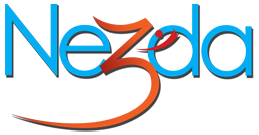- August 22, 2022
- by NGlobal
- #DOIT Updates
- 312 Views
- 0 Comments
To meet the changing needs of data consumers, Modern knowledge platforms are becoming increasingly complex. Information analysts and knowledge scientists want a quick access to knowledge, but IT, security, and governance are stuck, and analytics tools of all kinds can be used to access knowledge in an easy, secure, and standardized way.
How To Set up Cloud-Primarily based Information Safety and Regulatory Compliance?
When knowledge investors are not aligned, organizations are stuck in the knowledge delivery process. This is because Knowledge customers want the ability to find the right dataset, recognize its context, trust its high quality, and feed it to alternative devices. Information Security and Governance groups, on the other hand, should be trusted to use proper knowledge approvals and governance insurance policy.
Leverage Attribute-Primarily based Entry Management (ABAC).
Most organizations begin creating entry management insurance policies utilizing role-based entry management (RBAC). This method is helpful for easy use instances, however since roles are handbook and inherently static, each new use case requires the creation of a brand new position with new permissions granted to that person.
As the info platform grows in scale and complexity, the result`s painful coverage surroundings referred to as “position explosion.” Additionally, every system has its personal requirements of defining and managing permissions on roles, and RBAC is usually restricted to coarse-grained entry (e.g. to a complete desk or file).
Alternatively, ABAC permits organizations to outline dynamic knowledge authorization insurance policies by leveraging attributes from a number of methods to be able to make a context-aware choice on any particular person request for entry.
ABAC, a superset of RBAC, is ready to help the complexity of granular coverage necessities and increase knowledge entry to extra individuals and use instances through three important classes of attributes (person, useful resource and/or environmental) that can be utilized to outline insurance policies.
Dynamically Enforce Access Policies.
Mostofthecurrentcoverageenforcementoptionsrequiremaintainingnumerouscopiesofeachrecordandthecostofcreatingandmaintainingthemcanquicklyaddup.
Dynamic implementation is important to increase the granularity of policies in entry insurance without increasing the complexity of the overall knowledge system. It is also important to ensure that the group is fully aware of its changing governance needs.
Create a Unified Metadata Layer.
If ABAC is the engine that drives scalable and secure knowledge entry, metadata is the gas in the engine. It should provide insight into the content and location of the group’s records and frame attribute-based insurance policies for access management. A richer level of metadata also allows companies to use it to create more detailed and relevant entry insurance policies.
There are 4 key areas to think about when architecting the metadata lifecycle:
-
Entry:How can we allow seamless entry through API, to be able to leverage metadata for coverage selections?
-
Unification:How can we create a unified metadata layer?
-
Metadata Drift:How can we make sure the metadata is updated?
-
Discovery:How can we uncover new technical and enterprise metadata?
Metadata management tools that use synthetic intelligence to automate components of the metadata lifecycle includes are also useful as it carries out duties like discovery of sensitive knowledge variants and use of appropriate knowledge arrangements; automation of knowledge discovery and schema inference; It is even more useful because it handles tasks such as mechanical detection of data drift.
Allow Distributed Stewardship.
Scaling secure knowledge entry is not just a matter of scaling the diversity of policies and enforcement strategies. Given the variety and complexity of the variety of knowledge available and the business needs that want to leverage it, the method of determining coverage should also be extensible.
To enable distributed stewardship the access system should support two key areas. First delegate the management of data and access policies to people in the lines of business who understand the data or governance requirements and replicating centralized governance standards across groups in the organization, and next ensure that change can be propagated consistently throughout the organization.
Ensure Easy Centralized Auditing.
Figuring out the place delicate knowledge lives, who’s accessing it, and who has permission to entry it are essential for enabling clever entry selections.
Another consideration is to invest in basic visibility mechanisms early in the knowledge platform journey to enable knowledge stewards and governance groups to review knowledge usage and demonstrate the value of the platform. Knowing what the company knows and how people use it, the group can use that knowledge to design a more practical entry-level insurance plan.
Future-Proof Integrations.
Data platforms can change over time as data sources and tools evolve, so integration with an organization’s broader environment is a key component of a successful access control approach.
Similarly, access control frameworks should be adaptable and support flexible integration across data structures. An advantage of using ABAC for access control is that attributes can be retrieved from existing systems within an organization. Provided that attributes can be retrieved in a performant way in order to make dynamic policy decisions.

